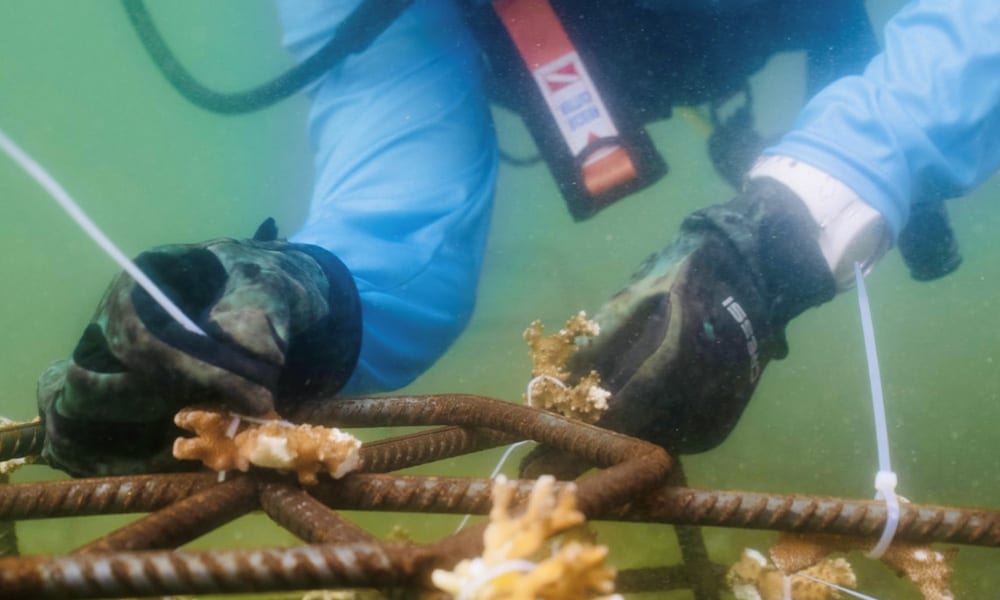Several companies joined forces to implement a marine ecosystem restoration project in Punta Cacique, Guanacaste, which allowed the planting of 1,500 coral fragments, thanks to the support of 30 volunteers.
Volunteers from Garnier & Garnier – a real estate developer of the Waldorf Astoria Hotel, Guanacaste – the Alianza Mar y Tierra, and the Center for Marine Science and Limnology Research of the University of Costa Rica (CIMAR), made this project possible.
According to CIMAR data, coral reefs are the backbone of the marine ecosystem, supporting more than 25% of life in the ocean, and around 500 million people in the world depend directly on them, in terms of food, protection, and income from fishing and tourism.
Therefore, this initiative, in addition to promoting marine conservation, seeks to mitigate the impact generated by bad practices of some hotels in the area in the past.
In this first stage, the volunteers placed 60 structures, which will be maintained monthly by experts to ensure that the corals have the best conditions. The investment during the first year of the project will be USD $50,000.
“We have placed healthy coral fragments in steel structures with six legs at different levels, which we call spiders, with the objective of artificially recreating a coral reef, and we have placed them in an area that has the ideal conditions for their growth. In the short term, they will attract the arrival of other species and will contribute to the economy and tourism in the area,” said Juan José Alvarado, CIMAR – UCR researcher.
The planting of corals in this province seeks to restore the marine ecosystem affected by various threats, such as the increase in temperature – a result of global warming – and the proliferation of red tide, and aims to inspire other companies and entities to join the fight for environmental conservation.
According to experts, 100% of the corals planted survive, and the growth rate is very high, as they grow between 8 and 9 centimeters per year, which allows them to continue reproducing.
A vital part of this project has been the non-profit association Alianza Mar y Tierra, a citizen’s platform for the management, creation, and implementation of maritime and land conservation/restoration projects.
“What happens in the sea impacts the land, and what happens on land impacts the sea, so we cannot see them separately. With this kind of actions, we hope for the increase of marine life,” commented Sea and Land Alliance co-founder Elsiana Luna.






